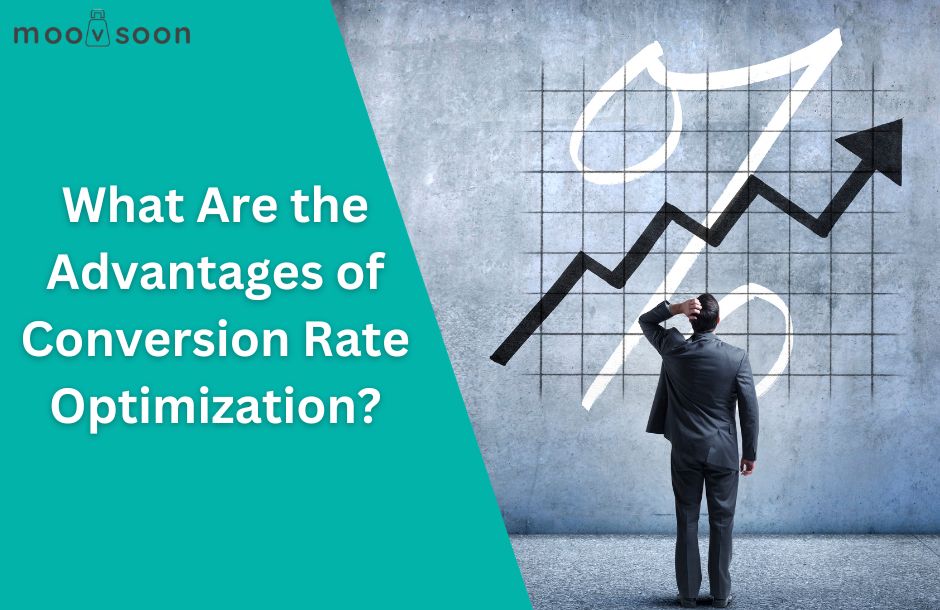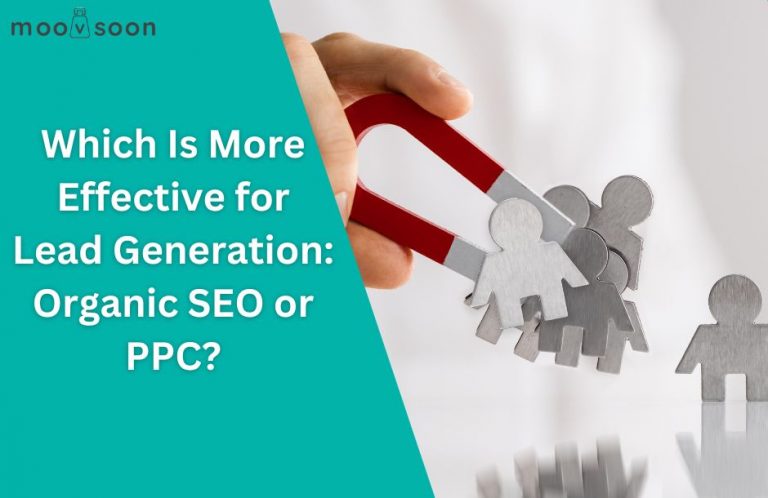
What Are the Advantages of Conversion Rate Optimization?
Conversion rate optimization (CRO) strengthens the percentage of visitors who complete desired actions on a website. In today’s highly competitive digital environment, marketing teams must analyze user behavior to shape successful online strategies. We invite you to explore our expertise in this area with moving leads, designed specifically for the moving industry.
CRO evolves by combining user experience research and data analysis to improve site outcomes. Data trends confirm that organizations increasingly use A/B testing, user feedback, and analytics tools to locate where users exit the conversion funnel. Studies show that adjusting simple elements, such as button colors or making forms easier, can generate large gains in conversions.
CRO holds increased significance now because a higher number of consumers purchase online, so optimizing conversion opportunities makes digital marketing more productive.

Conversion Rate Optimization Strategies that Drive Customer Growth and Sales Performance
Conversion Rate Optimization (CRO) increases customer engagement and sales by systematically improving site elements to guide users toward intended actions. CRO targets enhancements for user experience, which influences the rate of customer acquisition and loyalty. Businesses review user behavior to reveal obstacles in the sales funnel and fine-tune factors such as call-to-action buttons, landing page layouts, and placement of on-page content.
CRO utilizes A/B testing to assess webpage variations and selects those that achieve higher conversion rates, providing data-driven adjustments that increase sales. This method raises conversion probability and helps marketers extract maximum value from current website traffic through informed optimization.
CRO represents a foundational approach for brands that want stronger online outcomes and ongoing expansion of their sales and customer base. Our team at MoovSoon offers tailored solutions to integrate realtor data and streamline lead generation — contact us to learn how we can assist your business growth at +1 (914) 255-5452.
How Higher Conversion Rates Lower Customer Acquisition Costs in Online Marketing
Higher conversion rates reduce customer acquisition costs by increasing the efficiency of marketing expenditures. When more website visitors turn into customers, businesses expend less effort and budget for every new customer acquired.
This improvement delivers greater sales output and a stronger return on investment. Conversion Rate Optimization (CRO) sharpens user experience and targeting so sites are better equipped to create productive interactions and win additional customers.
When sales increase, businesses can redistribute spending to support other priorities for organizational growth.
How Conversion Rate Optimization Drives Business Success Over Competitors
Conversion Rate Optimization (CRO) enables businesses to outperform competitors by improving user experience and increasing conversion rates. Businesses analyze user behavior and test different website elements to determine the most effective methods for visitor engagement and conversion. This data-driven approach empowers businesses to make informed decisions, resulting in higher user satisfaction and stronger visitor engagement.
Higher conversion rates deliver more customers without requiring increased website traffic, which improves cost efficiency. Adoption of CRO allows businesses to deliver faster outcomes than conventional marketing approaches provide. CRO also uncovers customer preferences and behavior patterns, enabling businesses to refine their offerings and maintain a competitive advantage.
CRO incorporates A/B testing and various experimental techniques to improve marketing strategies. This continuous process ensures businesses respond to shifting market conditions and evolving customer expectations, supporting ongoing competitiveness. We provide specialized realtor integration tools and lead generation tactics as part of our services, helping you keep pace in a dynamic market. For a practical demonstration, feel free to schedule a demo or call our team at +1 (914) 255-5452.
How Website Optimization Increases Lead Generation
An optimized website generates more leads by delivering a seamless user experience and presenting relevant content, making it more attractive compared to competitor sites.
Conversion Rate Optimization (CRO) improves key website components such as layout, call-to-action buttons, and content clarity. Enhanced engagement and reduced bounce rates result directly from these website improvements.
For example, a clearly stated value proposition and simple navigation encourage visitors to complete desired actions like filling out a contact form. Iterative testing and refinement of these features allow a website to outperform competitors by converting more visitors into leads.
Why User Experience Is Essential for Customer Retention
User experience determines customer satisfaction and loyalty, making it key for retention. Positive experiences motivate repeat visits and purchases, but negative experiences can cause customers to leave.
Conversion Rate Optimization (CRO) improves user experience by streamlining navigation, decreasing page load times, and customizing content. When businesses prioritize CRO, they engage and retain customers more effectively than competing brands, which increases conversion rates and boosts revenue. Our realtor-centric CRM and referral management tools, part of MoovSoon’s comprehensive offerings, further support sustained customer relationships and retention.
How CRO Improves User Experience on Websites
Conversion Rate Optimization (CRO) enhances user experience by simplifying website interactions and making processes more intuitive and effective. CRO analyzes user behavior to optimize specific design elements, such as call-to-action buttons and navigation features, leading to a clearer and more efficient user journey. CRO ensures that visitors locate desired content quickly, reducing frustration and increasing satisfaction levels.
CRO utilizes testing of various layouts and content to determine which options appeal most to users, resulting in higher engagement and increased conversion rates. Improved user experience enhances customer satisfaction and encourages loyalty, as users are more likely to revisit a website that efficiently fulfills their requirements.
CRO relies on data analysis and feedback from users, confirming that implemented changes create tangible impact and align with user expectations.
How does website navigation impact conversion rates?
Website navigation influences conversion rates by improving the overall user experience. Clear and intuitive navigation enables users to locate information quickly, which lowers bounce rates and encourages user engagement.
Conversion Rate Optimization (CRO) addresses this by simplifying the paths to critical site content, increasing the probability of conversion actions. For example, an organized and clear menu helps users reach product pages efficiently, which improves purchasing outcomes.
CRO applies A/B testing to optimize navigation elements, ensuring they align with what users expect and effectively guide them toward key actions. Effective navigation contributes directly to increased website conversions.
Why is mobile optimization important for user engagement?
Mobile optimization enhances user engagement as more people access websites using smartphones. Conversion Rate Optimization (CRO) ensures that mobile sites remain user-friendly, load quickly, and provide visually pleasing layouts.
A smooth mobile experience increases user engagement, extends session duration, and supports higher conversion rates. As more traffic comes from mobile devices, CRO uses techniques like responsive layouts, simplified navigation, and speed improvements to raise user satisfaction and retention.
With mobile usage continually increasing, optimizing for mobile remains necessary for maintaining a competitive edge and fulfilling user expectations.
How CRO Increases the Value of Your Website Traffic
Conversion Rate Optimization (CRO) increases the value of existing website traffic by encouraging more visitors to complete key actions, such as purchasing products or subscribing to newsletters. CRO improves the user experience and website performance while keeping the traffic volume constant.
By tracking user behavior and making targeted updates such as A/B testing and navigation improvements, businesses raise the percentage of visitors who convert. This process raises revenue and provides a higher return on investment by making better use of available traffic.
CRO consistently improves opportunities for each visitor to become a customer. At MoovSoon, we provide integrated tools that convert real-time MLS data into actionable leads, enhancing how your inbound traffic translates into business growth. Contact us at +1 (914) 255-5452 to learn more and see it in action.
What strategies convert casual visitors into customers?
To transform casual visitors into customers, Conversion Rate Optimization (CRO) uses focused techniques that capture the value of existing website traffic. CRO improves factors such as clear calls-to-action, streamlined navigation, and relevant content that matches user goals.
A/B testing helps organizations test multiple page variations to determine which versions engage visitors most effectively. These methods improve interaction and guide users efficiently through the purchasing process, converting interest into sales.
CRO consistently raises the traffic value by turning a greater share of visitors into returning customers.
How A/B Testing Drives Enhanced Results in Marketing Campaigns
A/B testing increases the value of existing website traffic by enabling marketers to identify the most effective webpage variations. Businesses use A/B testing to present different webpage versions and measure which elements achieve higher performance metrics.
Marketers compare these variations to select strategies that increase conversions efficiently. Optimizing web elements through A/B testing refines the user experience, which leads to higher engagement and improved sales without additional traffic investment.
A/B testing reveals actionable patterns in user behavior, allowing teams to make data-driven choices that raise return on investment. Marketers maintain efficient marketing tactics using current website visitors to generate improved results.
Conclusion: Maximizing Conversion Rate for Greater Digital Marketing Success
Increasing conversion rate serves as a central objective for digital marketing performance. Focusing on conversion rate optimization (CRO) enables digital campaigns to achieve higher outcomes by converting site visitors into committed customers.
Teams use data-driven insights to improve strategies effectively. Marketers leverage analytics to distinguish which actions are working and identify those needing refinement. Insights gained through these processes support the delivery of tailored content and provide smoother user journeys, with the goal of raising conversion rates in today’s rapidly evolving digital market.
Sustaining competitiveness requires regular adjustments guided by real-time analytics. Reviewing analytics continually empowers marketers to make informed updates that enhance engagement. Consider applying these strategic approaches to scale your digital marketing campaigns. Our team at MoovSoon is ready to assist you with customized solutions that integrate MLS data and automate your marketing efforts. Feel free to explore our services or book a demo for a firsthand look. For personalized support, call us at +1 (914) 255-5452 or contact us anytime at info@moovsoon.com.



